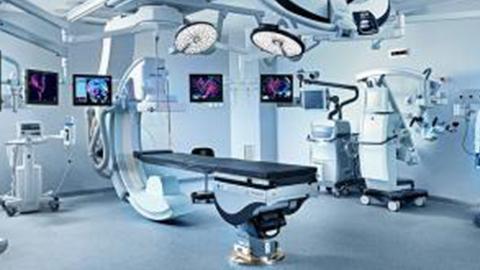
When patients visit hospitals for medical treatment of all kinds, they trust that doctors, nurses, surgeons, and aides possess the experience and credentials necessary for performing their job in a superior manner. In addition, patients also trust the hospital itself, including all equipment used to treat their health issue.
While physicians, surgeons, and nurses are held to the highest performance standards expected of people in their positions, patients also hold medical devices to the same level of ideals. If any component of a medical device fails to operate properly, the results could be catastrophic for the patient and the medical facility using the device.
Manufacturers of medical connectors and medical cable assemblies understand that their products are, in some cases, more vital to a patient's health than the attending physician or surgeon. Consequently, medical device makers consistently and consciously work to meet or exceed standards established by government compliance regulations with precisely developed quality assurance processes.
What is a Quality Assurance Process?
Quality assurance (QA) best practices for medical devices focus primarily on preventing defects and/or mistakes during the making of the device or component. Strict adherence to the principles of a QA plan not only improves the streamlining process when manufacturing the product but also ensures the manufacturer's exacting standards are achieved throughout the design and development of the medical product. Additionally, the quality assurance process safeguards the first-rate quality of assemblies, components, raw materials, and finished medical devices to prevent problems from emerging due to one or more defective components.
In general, a QA process for medical cable assemblies, medical connectors, and other essential components of medical devices involves:
- Defining the project and identifying a team of QA specialists to perform related tasks
- Planning implementation of quality assurance process protocols that fit the needs of the project
- Initiating test plans developed during the definition stage of the project
- Executing test procedures to determine if the product will operate as expected and without fail
- Correcting any flaws discovered during the quality assurance process
Makers of medical devices and components for medical devices must adhere to variants of the ISO 13485 standards regarding manufacturing of all medical devices. In fact, any medical device requires a QMS (Quality Management System) to show the device satisfies regulatory mandates for the making and selling of medical devices.1
The FDA and Medical Device Quality Standards
ISO is not the only regulatory organization providing standards by which medical device manufacturers must comply. In the United States of America, the FDA regulates the manufacture and sale of medical devices. One such regulation involves the classification of medical devices: Class I devices are low risk, Class II devices are medium risk devices, and Class III are high risk and generally life-supporting devices. The FDA requires strict adherence to quality assurance systems and increasing documentation and approvals for higher risk devices.2 Amphenol Alden manufactures connectors and cable assemblies that are used on both Class II and Class III devices, which demonstrates our ability to conform to standard industry regulations, as well as the capabilities and strength of our Quality Management System.3
Altogether, these processes ensure the safety and effectiveness of medical devices so doctors, nurses and patients alike can trust that their medical equipment is of the highest possible quality.
- ISO 13485 Medical Devices.” ISO, International Organization for Standardization, 12 July 2019, https://www.iso.org/iso-13485-medical-devices.html.
- Overview of Regulatory Requirements: Medical Devices – Transcript.” FDA, U.S. Food & Drug Administration, November 2011, https://www.fda.gov/training-and-continuing-education/cdrh-learn/overview-regulatory-requirements-medical-devices-transcript.
- Search Registration and Listing.” FDA, U.S. Food & Drug Administration, 14 October 2019, https://www.fda.gov/medical-devices/device-registration-and-listing/search-registration-and-listing.
